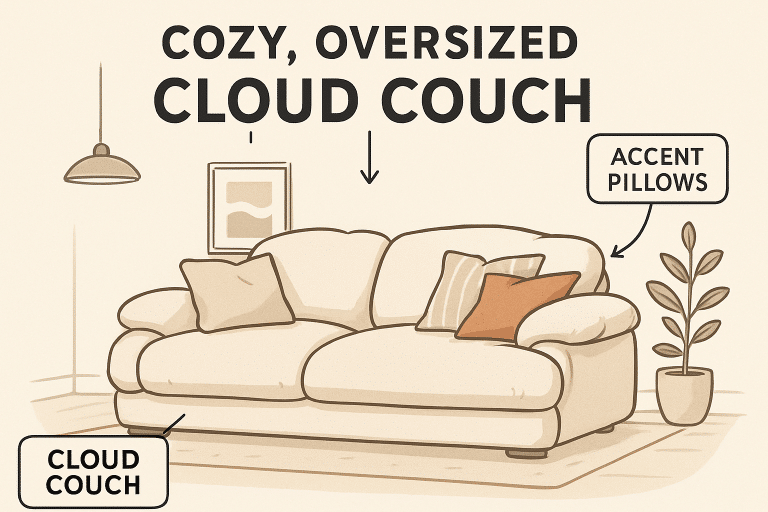What Are the Symptoms of ADHD? Main and Hidden Signs Explained
When most people think of ADHD, they imagine a restless child running around a class or a girl biting the insides of her lips. While that’s one version, it’s far from the full picture. Adults and kids alike can live with ADHD without ever fitting that stereotype.
The reality is more subtle: disorganization or excessive organization, emotional sensitivity or shutdown, forgetfulness, and even perfectionism. ADHD can be contradictory, but that’s the uniqueness of this disorder. Here, we’ll look at the main symptoms of ADHD and the lesser-known ones that shape daily life more than most people realize.
What Are the Main Symptoms of ADHD?
The “classic” profile of ADHD as a neurodevelopmental condition is centered around persistent patterns of inattention, hyperactivity, and impulsivity. Based on these patterns, ADHD can be diagnosed as inattentive, hyperactive-impulsive, and combined, according to the DSM-5.
The problem with diagnosing ADHD is that, besides “core” diagnostic symptoms, it can have unique manifestations. The Breeze ADHD test picks them up much more accurately than other online evaluations. The results from online quizzes can be escalated to a mental health specialist, who will explain why you behave the way you do.
Below are the main symptoms of ADHD that are used in the DSM-5 and that are the most palpable in adulthood.
Trouble Focusing (Constant Brain Fog)
One of the most common struggles for people with ADHD is maintaining attention. A person may begin a lecture focused but lose track within minutes, or start reading a work report only to realize they’ve re-read the same paragraph five times. And at the same time, they might be super interested in the topic. The problem is just getting down to do stuff.
Adults with this main ADHD symptom describe “brain fog” as their thoughts scattering and tasks remaining unfinished despite genuine effort. This happens due to impaired executive function, the brain’s system for planning, organizing, and sustaining attention.
Disorganization
Disorganization is another defining symptom of ADHD. Usually, it’s very obvious, especially in childhood. But disorganized behavior might be written off as a personality trait or laziness.
Disorganization is significantly disruptive. Almost every ADHD individual experiences disorganization at least somewhere: in the house, at work, or even in their own head. A common scenario might be missing bill payments, forgetting a child’s school event, or juggling multiple projects with none completed on time.
These challenges are linked to an underactive prefrontal cortex, the part of the brain that manages planning and time.
This chronic sense of disorder affects productivity and self-esteem as a result. Adults with this ADHD symptom may feel like they’re constantly “catching up” and never live up to societal expectations.
Impulsivity and Risk-Taking
Impulsivity can affect big decisions in life, not only when you say the wrong thing in class. For adults, this may include spending too much money, quitting a job on a whim, or doing dangerous things without thinking about the long-term effects.
Emotional impulsivity is equally as strong: speaking something in anger that you later regret or making a huge choice based on how you feel at the time.
Studies indicate that ADHD brains frequently interpret reward and risk divergently, resulting in a heightened inclination towards quick satisfaction. This impulsiveness can sometimes lead to creativity and spontaneity, but it can also lead to instability and regret. It can put a lot of stress on your money, job, and relationships if you don’t have ways to deal with it.
Troubles with Maintaining Relationships
ADHD doesn’t just effect the individual who has it; it also affects the people they care about. If you miss social plans, or are always late, people may think you are unreliable.
One of the main ADHD symptoms is experiencing trouble attaching to other people. Couples with one partner diagnosed with ADHD are more susceptible to stress and exhibit elevated divorce rates. They might still love each other, but broken promises, bad communication, impulsivity, etc., may be too hard for a partner without ADHD to carry.
Hyperactivity and Fidgeting
In children, hyperactivity is obvious: running, climbing, or constant movement. In adults, fidgeting doesn’t go away, but turns into restlessness. You can find an adult with ADHD tapping their foot, pacing during phone calls, or doing weird facial experissions.
While society often expects children to “grow out of it,” the old habits and “needs” to move simply transform. Although fidgeting might look harmless, it’s not the healthiest coping mechanism to release excess energy. Without ways to channel this energy productively, it can add to frustration and stress.
Memory Issues
ADHD often messes with working memory, which is the brain’s capacity to store and use information right away. So, this may look like forgetting where you put your keys, forgetting directions, losing track of a conversation halfway through, and even not being able to recollect common knowledge such as facts about yourself.
Brain imaging studies have indicated that individuals with ADHD have less activity in the hippocampus, which is why they often forget things. These memory problems can also affect how you remember emotions, such as forgetting good things while remembering bad things. People can deal with these problems better with the necessary tools, like reminders and organized systems.

What Are the Hidden Symptoms of ADHD?
When people think of this condition, they usually picture the main ADHD symptoms, such as restlessness, distraction, or fidgeting. But beneath the surface, ADHD has a more complex set of symptoms that aren’t always recognized by doctors, teachers, or even individuals themselves. These hidden signs can be just as disruptive as the classic ones, yet they might get mistaken for personality quirks.
Hyperfocus
While trouble focusing is well-known, many people with ADHD also experience hyperfocus. It’s the complete opposite of the inability to concentrate. The brain wouldn’t be brain if it didn’t contradict itself.
The thing with hyperfocus is that ADHDers might become so absorbed in an activity that hours pass unnoticed. This can happen while working on a hobby, binge-watching shows, or researching a new interest. That’s because their brain is chasing dopamine it so desparately needs.
On the surface, hyperfocus looks like productivity, but it often comes at the expense of daily responsibilities. Neurodivergent people might skip meals, ignore important tasks, or forget about self-care.
Paralysis of Moving Between States
Starting a task, switching between activities, or even moving from the couch to the kitchen can feel overwhelming with ADHD. This “paralysis” comes from the brain struggling to transition between states.
This can also affect enjoyable activities, such as hesitating to leave home for a fun outing. This difficulty is related to executive function, which also causes brain fog.
Rejection Sensitivity Dysphoria
Rejection sensitivity dysphoria (RSD) is one of the worst invisible symptoms of ADHD. It’s a strong emotional response to what you think is criticism or rejection. Small words, like a boss telling you to “do better next time,” can make you feel very ashamed or angry.
Relationships are harder for people with RSD because they may pull away to protect themselves or overcompensate to get support.
People with ADHD have trouble controlling their emotions, which may explain why they are more sensitive.
Meticulous Organization
Interestingly, some people with ADHD cope by over-controlling their environment. Instead of appearing messy or scattered, they seem obsessively neat. From alphabetizing bookshelves to color-coding planners, and even enjoying trip planning.
This meticulous organization is usually a compensatory strategy to counteract underlying chaos. While it may look like “perfectionism,” it’s usually about survival: creating order in the face of a brain that struggles with memory and focus. However, this hyper-organization can become exhausting, as any disruption to routines causes stress.
Substance Use
Another hidden effect of ADHD is that it makes people more likely to use drugs, like alcohol, nicotine, or even caffeine. ADHD makes it much more likely that someone will develop a substance use problem, and this typically begins in adolescence. The reason is easy to understand: drugs temporarily ease restlessness.
Some people use alcohol to calm down hyperactivity, while nicotine gives them a dopamine boost that helps them concentrate. Sadly, this way of living can quickly turn into dependence and worsen health in general.
Conclusion
Answering the question “What are the symptoms of ADHD?” is easy. Those are problems with focusing, disorganization, and impulsivity. We have to focus on how those symptoms show up in different people, depending on their background. Due to research in this field, we already know about the “hidden” symptoms, such as hyperfocus, rejection sensitivity, and even precise organizing.
ADHD is a complex disorder. To help those who have ADHD and reduce the stigma around it, it is important to understand both the visible and hidden sides of the condition.








